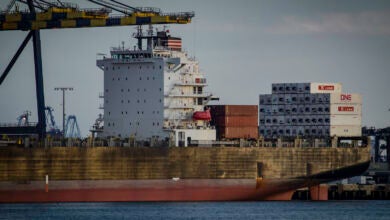Top Stories
Trucking
One long trip: XPO driver achieves 4M accident-free miles
XPO driver Dale Williams speaks on his career and safety practices after being celebrated for driving 4 million accident-free miles.

Company Earnings
Tough trucking market hits EBITDA at TriumphPay; other indicators up

Trucking Regulation
FMCSA looks to streamline tracking of motor carriers, freight brokers

Trucking Regulation




























































